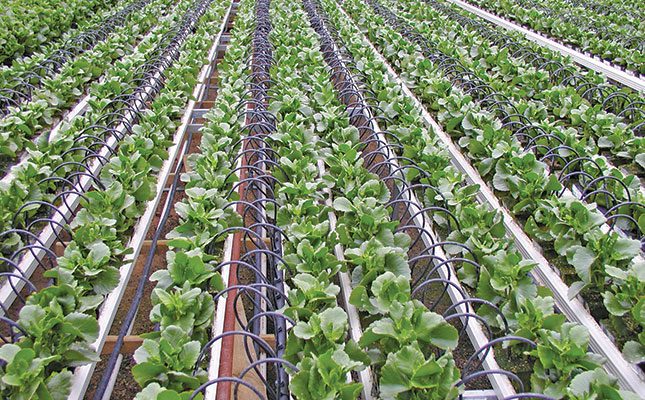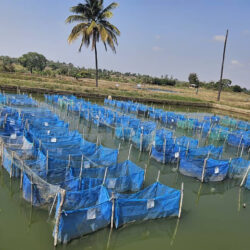Johannesburg, 22 December 2024 – Agriculture remains the cornerstone of Africa’s economy, employing over 60% of the continent’s workforce and contributing significantly to GDP. Yet, despite its dominance, food insecurity continues to cast a long shadow over millions of lives. Erratic climate patterns, outdated farming techniques, and economic disruptions have made food production and distribution a constant challenge. As we look toward 2025, Africa faces a defining moment to adopt bold, scalable solutions that will address food insecurity and strengthen its agricultural systems.
Climate-Smart Agriculture: The Way Forward
Africa’s farmers stand on the frontlines of climate change. Droughts, floods, and unpredictable weather have decimated yields and increased hunger across regions already grappling with fragile food systems. The adoption of climate-smart agriculture (CSA) presents a pivotal opportunity. CSA integrates techniques such as drought-resistant seeds, conservation agriculture, and precision farming to boost productivity while enhancing resilience.
The Role of Technology in Climate-Smart Agriculture
Technology plays a significant role in modernizing farming practices. Digital tools such as weather prediction apps, crop-monitoring drones, and AI-driven data platforms are helping farmers make informed decisions. In Ghana, for example, farmers using precision agriculture tools have optimized irrigation and fertilizer use, reducing waste and increasing crop yields.
Initiatives like the Alliance for a Green Revolution in Africa (AGRA) have introduced improved seed varieties across Kenya and Nigeria, leading to yield increases of up to 300% for smallholder farmers. In Malawi, CSA-backed interventions reduced post-harvest losses by 25%, ensuring food availability throughout the year.
Meanwhile, in Tanzania, Farm Africa’s CSA project has empowered thousands of farmers with training in sustainable farming practices. These efforts have not only improved yields but also safeguarded land quality for future generations. Scaling such initiatives continent-wide will be essential to drive food security.
Innovating Irrigation Systems
In Africa, where over 90% of farmland depends solely on rainfall, irrigation remains critically underdeveloped. Countries like Ethiopia and Morocco have demonstrated the transformative power of investing in irrigation infrastructure, showcasing pathways for consistent water access and increased agricultural productivity.
Solar-Powered Solutions for Small Farmers
Solar-powered irrigation systems provide a sustainable and cost-effective solution for small-scale farmers. These systems eliminate the reliance on expensive diesel-powered pumps, reducing operational costs and environmental impact. In Senegal, solar irrigation projects have enabled farmers to irrigate more land, resulting in a 20% increase in harvests.
The Green Morocco Plan expanded irrigated farmland by 50% in key agricultural zones, significantly boosting yields and enhancing economic contributions from agriculture. Similarly, Ethiopia’s strategic investments in solar-powered irrigation systems have increased productivity by 40%, empowering farmers with greater financial stability.
The African Development Bank’s Desert to Power initiative, which seeks to expand renewable energy for irrigation, is a forward-thinking model that could be replicated across the continent. By scaling solar-powered irrigation systems, small-scale farmers will benefit from consistent water access while reducing operational costs.
Financial Inclusion for Farmers
Smallholder farmers—responsible for up to 80% of Africa’s food production—continue to face barriers to financing, markets, and insurance. Addressing these challenges in 2025 will require governments and the private sector to scale up microfinance solutions and digital lending platforms tailored for farmers.
Digital Innovation and Farmer Access
Digital platforms are revolutionizing access to financial services. In Kenya, platforms like M-Pesa have provided millions with access to mobile banking services, enabling farmers to purchase seeds, equipment, and fertilizers. In Nigeria, companies like Hello Tractor address the mechanization gap through their app-based tractor-sharing services, driving efficiency and cost reductions.
Kenya’s M-Pesa revolutionized financial inclusion through mobile money, while Nigeria’s Hello Tractor has tackled mechanization challenges with its app-enabled tractor-sharing services. By reducing farming costs by 30% and improving efficiency, Hello Tractor is driving measurable progress in productivity.
In Zambia, initiatives like Musika Development connect farmers to affordable financial products, enabling them to access equipment, fertilizers, and services that were previously out of reach. Such digital and financial innovations must be replicated and expanded to empower Africa’s farmers as economic drivers.
Cross-Border Trade and Markets
One of the greatest paradoxes in Africa’s food systems is that surplus crops in one region often go to waste while neighboring regions face crippling shortages. The African Continental Free Trade Area (AfCFTA) holds the potential to unlock intra-African food trade by reducing barriers and improving market access.
Infrastructure Investments to Bridge Gaps
To facilitate regional trade, investments in infrastructure are critical. Roads, cold storage facilities, and efficient logistics networks ensure that crops reach markets quickly and in good condition. For instance, the TradeMark Africa initiative in East Africa has reduced transport delays by upgrading border posts, benefiting farmers and traders alike.
TradeMark Africa has successfully streamlined regional trade across East Africa by upgrading border facilities and enhancing infrastructure. Meanwhile, South Africa’s investment in cold storage facilities for perishable goods has improved export opportunities for small-scale farmers, ensuring produce reaches regional and global markets intact.
By prioritizing investments in transport networks, storage infrastructure, and regional cooperation, Africa can bridge food surpluses and shortages, creating a more integrated and efficient food system.
Case Studies: Regional Success Stories
- Malawi: Farmers utilizing CSA techniques achieved a 45% increase in maize production, helping mitigate hunger in rural communities.
- Morocco: Strategic investments in irrigation and mechanization boosted agricultural exports, significantly contributing to GDP.
- Nigeria: Innovations like Hello Tractor have driven mechanization, reducing costs and improving farm productivity.
- Senegal: Solar irrigation projects empowered smallholder farmers, increasing yields and reducing dependency on rainfall.
- Tanzania: CSA training programs have improved food security for over 200,000 farmers, while enhancing sustainable land use practices.
Why It Matters
Food security is not merely an agricultural goal; it is the foundation upon which all other economic ambitions rest. A continent that feeds itself strengthens its people, builds resilience, and lays the groundwork for sustained prosperity. As Africa stands on the cusp of 2025, this is not the time for incremental measures—it is the moment for bold, collective action.
The Road Ahead
Governments, private sectors, and development partners must work together to scale proven solutions such as CSA, irrigation systems, financial inclusion platforms, and regional trade infrastructure. By strengthening innovation and empowering farmers, Africa can transform its agricultural sector into a driver of food security, economic growth, and resilience.




